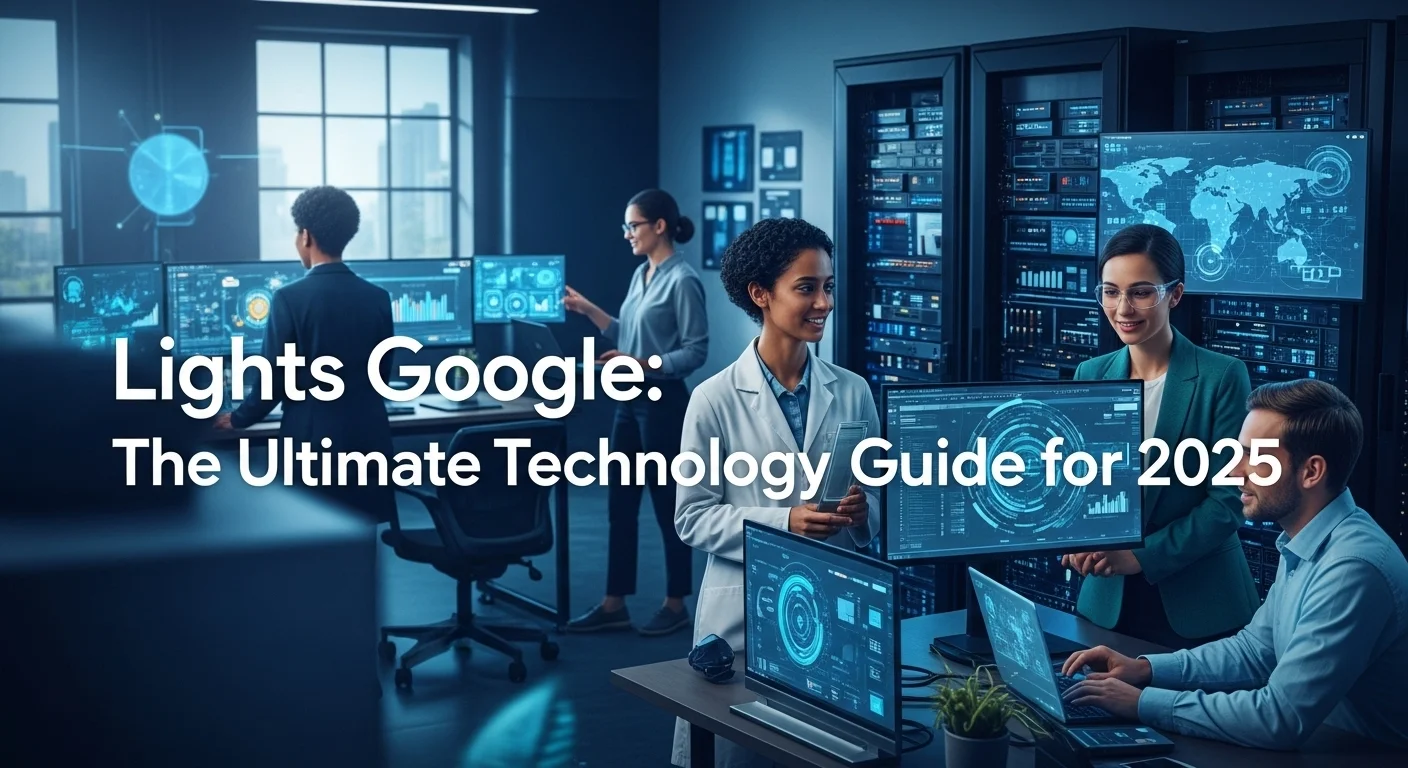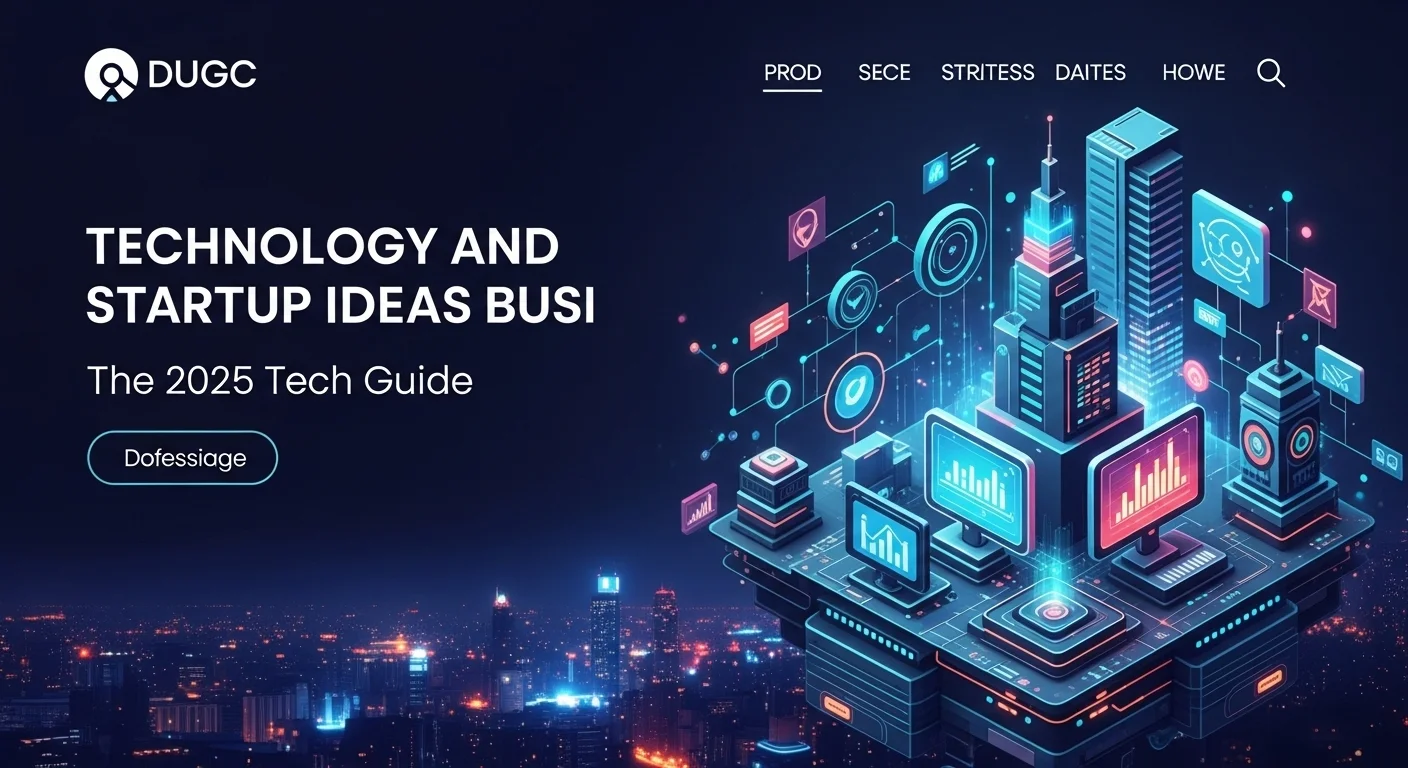Google Smart Lights: Your Guide to a Brighter, Smarter Home & Business

Executive Summary
I still remember the first time I said, 'Hey Google, turn on the lights,' and my living room instantly lit up. It felt like a little piece of the future had arrived. But that simple voice command is just the starting point. When we talk about 'Lights Google,' we're not talking about a single product, but a whole ecosystem where smart lighting works seamlessly with Google Assistant. This guide is born from years of setting up these systems in my own home and for clients. We'll cut through the jargon and explore what this technology really is, from the basics of setup to the magic of automation that can make your life easier and your business more efficient. We'll look at the tech behind it all, like AI and the game-changing Matter protocol, and see how businesses are using smart lights to save money and create amazing customer experiences. This is your practical guide to understanding and mastering how smart lighting with Google is changing the way we interact with our spaces.
Table of Contents
- What Exactly Are 'Google Lights' and Why Should You Care?
- The Building Blocks: What Makes It All Work?
- The Tech Behind the Magic: AI, the Cloud, and Matter
- Why Smart Lighting is a Smart Move for Businesses
What Exactly Are 'Google Lights' and Why Should You Care?
In my line of work, I hear the term 'Lights Google' thrown around a lot. It's not a specific brand of bulb made by Google, but rather a simple way to describe a powerful idea: controlling any compatible smart light with your voice or phone through the Google Home ecosystem. This shift has turned lighting from a basic utility into something interactive and intelligent. For me, its importance comes down to one thing: it makes life better in tangible ways. It’s a key part of the whole smart home movement. At home, being able to say, 'Hey Google, dim the living room lights to 50%' is more than a novelty; it’s about creating the perfect ambiance for movie night without leaving the couch. The real power, though, is in automation—lights that wake you up gently in the morning or make it look like you're home when you're on vacation. For businesses, this technology isn't just a gimmick; it's a real competitive edge. It can create unforgettable experiences for customers, slash energy bills, and even make employees happier and more productive. It’s all about making a universal utility—light—work smarter for you.
The Building Blocks: What Makes It All Work?
To really get it, you have to understand the key players that work together to create this seamless experience. It's a beautiful blend of hardware and software. The heart of the system is the Google Assistant. This is the AI-powered helper that lives in the cloud and understands what you mean when you speak naturally. It’s available on your phone, but it really shines on devices like the Google Nest Hub or Nest Mini. I have a Nest Hub in my kitchen, and it’s become the command center of my home, not just for lights but for everything else. It listens for my commands and gives me feedback. The next piece of the puzzle is the Google Home app on your phone. This is where you do all the setup and organization. You can group lights into rooms, create schedules, and control everything even when you're miles away from home. Finally, and most importantly, you have the smart lights themselves. These are made by great companies like Philips Hue, LIFX, Nanoleaf, and many others. The trick is to look for the 'Works with Google Assistant' or 'Made for Google' logo on the box. This label is your guarantee that it will integrate smoothly into your setup. This open approach has been fantastic for us as consumers because it means more choice, more innovation, and better prices.
The Tech Behind the Magic: AI, the Cloud, and Matter
The real 'wow' factor of smart lighting isn't the bulb; it's the incredible technology powering the system from behind the scenes. Artificial Intelligence (AI) is what makes Google Assistant so smart. It's not just recognizing keywords; it's understanding context. I can say, 'Hey Google, it's movie time,' and it knows to dim the lights, turn on the TV, and maybe even lower the smart blinds. That's AI at work, learning my habits over time. All of this is made possible by Google's massive cloud infrastructure. When you speak a command, it's processed on Google's servers almost instantly and sent back to your light bulb. This is what lets you turn on your house lights from a beach halfway across the world. But perhaps the most exciting development in recent years is interoperability, which has always been the biggest headache for smart homes. In the past, getting devices from different brands to talk to each other was a nightmare. That's why Google, Apple, Amazon, and others teamed up to create Matter. Think of Matter as a universal translator for your smart devices. It's an open-source standard that allows devices to communicate directly with each other over your local network, regardless of who made them. I've been switching my own home over to Matter-compatible devices, and the difference in reliability and speed is noticeable. It makes setup a breeze and finally delivers on the promise of a truly connected, hassle-free smart home.
Why Smart Lighting is a Smart Move for Businesses
While we love smart lights in our homes, I've seen firsthand how they can be truly transformative for businesses. It's a strategic tool. Take the retail and hospitality world. Ambiance is everything. A restaurant I worked with uses smart lighting to automatically shift the mood from a bright, bustling lunch service to a warm, intimate dinner setting. A clothing store can use focused, high-quality light to make their products pop. These aren't just cosmetic changes; they directly influence how customers feel and spend. In the modern office, the benefits are huge. Automating lights to turn off in empty meeting rooms or dim based on daylight saves a surprising amount of money on electricity. But it's also about people. We can now implement 'human-centric' lighting that mimics the natural arc of sunlight throughout the day—cooler tones in the morning for focus, warmer tones in the afternoon to reduce eye strain. This has a proven effect on employee well-being and productivity. The operational perks are also a game-changer. Imagine a 'close-up shop' routine where a single voice command turns off every light, adjusts the heat, and arms the security. It simplifies daily tasks and reduces human error. For business owners, having that remote access and control through the Google Home app provides incredible peace of mind.

How to Set Up and Master Your Google Smart Lights
Alright, let's get our hands dirty. Moving from theory to practice with Google-powered smart lights is where the fun really begins. This is your guide to getting everything up and running, from your very first bulb to creating sophisticated automations that will make your friends and colleagues jealous. As someone who has set up countless systems, I can tell you that understanding the 'how' is just as important as the 'what.' We’ll cover the setup process, get into the nitty-gritty of how these devices talk to each other, and then dive deep into the automation tools that separate a simple setup from a truly smart one. I'll even share some real-world examples of how businesses are putting this to work to give you some inspiration.
Technical Deep Dive: Setup and Communication Protocols
Getting started is surprisingly painless these days. If you buy a device with the 'Made for Google' badge, you just screw it in, open your Google Home app, and it will likely pop up, ready to be configured. It's a two-minute process that still feels a bit like magic. For 'Works with Google Assistant' devices, there's just one extra step: you set it up in the manufacturer's app first (like the Philips Hue app) and then link that account to Google Home. Once linked, all your lights appear, and you can start organizing them into 'Rooms.' Pro tip: take the time to name your rooms and lights properly. 'Kitchen Ceiling' and 'Bedside Lamp' are much more useful than the default names when you're trying to use voice commands.
Now, for how they communicate. Understanding this helps you build a more reliable system.
- Wi-Fi: The simplest option. The bulb connects right to your router. It's great for getting started, but if you're like me and have dozens of smart devices, it can start to clog up your network. Think of your Wi-Fi as a highway; too many cars can create a traffic jam.
- Zigbee/Z-Wave: These are dedicated languages for smart devices. They create their own low-power mesh network, which is super reliable and doesn't interfere with your Wi-Fi. The catch is they need a 'hub' or 'bridge' to translate their signal for your router. The Philips Hue Bridge is a classic example.
- Thread: This is the new kid on the block and a core part of the Matter standard. Like Zigbee, it's a mesh network, but it's built on the same foundation as the internet. This means it's fast, self-healing, and because many new Google Nest devices have a Thread router built-in, you often don't need an extra hub.
The big shift is towards Matter. My advice to anyone starting today is to look for the Matter logo. It runs on top of Wi-Fi and Thread and acts as that universal translator I mentioned. It's the industry's promise to us that, going forward, things will just work together. Google is all-in on Matter, so betting on it is the smartest play for a future-proof home or business.
Mastering Automation: From Basic Routines to the Script Editor
This is where your smart lighting system truly comes to life. Simple voice commands are great, but automation makes your space proactive. The Google Home app has some fantastic built-in Routines. The 'Good Morning' routine is a classic for a reason—I have mine set to slowly fade my bedroom lights on, tell me about my first meeting, and start my favorite podcast. The 'Home & Away' routines are a must-have. By using your phone's location, Google knows when you've left and can turn off all the lights automatically, then turn on the porch light as you pull into the driveway. It's a 'set it and forget it' feature that saves energy and adds a layer of security.
For those who want to push the limits, Google offers the Automations Script Editor. Don't let the word 'script' scare you. It’s a powerful tool that lets you create automations with much more complex conditions. For example, I have a script that says, 'IF my back door sensor opens AND it's after 10 PM AND my security system is armed, THEN turn all the lights in the house to 100% brightness and red.' That's something you can't do with a basic routine. It allows for sequences, delays, and multiple triggers. And with the new 'help me script' AI feature, you can just describe what you want in plain English, and Google will write the code for you. It's made this incredibly powerful tool accessible to everyone, letting you automate your lights with incredible precision.
Business Solutions in Practice: Real-World Case Studies
Let's look at how this plays out in the real world. I love seeing how creative business owners use this tech.
- The Boutique Retail Store: A small clothing shop uses smart spotlights to create a dynamic space. Fifteen minutes before opening, a 'Morning' routine automatically brightens the lights to a crisp, cool white. In the evening, a 'Wind Down' scene shifts the lighting to a warmer, more inviting tone to encourage relaxed browsing. When the manager leaves, she says, 'Hey Google, close the shop,' and all lights turn off except for one perfectly lit window display, saving time and energy while maintaining curb appeal.
- The Modern Co-working Space: In a shared office, meeting room lights are linked to Google Calendar. When a room is booked, the lights turn on five minutes before. If a motion sensor detects no one has shown up after 10 minutes, the lights turn off, and the room is freed up in the booking system. It's a simple automation that drastically improves room availability and efficiency.
- The Smart Cafe: A local cafe uses lighting to guide the customer experience. It's bright and energetic during the morning rush. As evening approaches, a scheduled 'Sunset' routine automatically dims the main lights and switches on cozy accent lamps, transforming the atmosphere for the dinner crowd. The owner told me his favorite feature is being able to check the app from home to make sure his staff didn't forget to turn off the stockroom light again, saving him money and worry.

Pro Tips for a Secure and Brilliant Smart Lighting Setup
Okay, so you’ve got the basics down. To really elevate your experience, you need to think strategically. It's about optimizing your setup to be secure, efficient, and perfectly in tune with your life or business. For me, it's about creating a space that feels intuitive, not just 'smart.' This section is packed with my go-to tips and best practices—the things I tell all my clients to ensure their system is reliable, safe, and ready for the future. We'll cover the non-negotiable security steps, explore some truly creative automations, and take a peek at where this technology is headed.
Best Practices for Security and Efficiency
Before you add a single new smart bulb, we need to talk about security. This is critically important. Every connected device is a tiny door into your digital life, so let's make sure those doors are locked.
- Lock Down Your Network: This is step one, always. Use a strong, unique password for your Wi-Fi. If your router supports WPA3 encryption, use it. And please, change the default admin password on your router itself!
- Create a Guest Network: My single biggest piece of advice for home security. Most modern routers let you create a separate guest network. I put all my smart home gadgets—lights, plugs, you name it—on this network. This isolates them from my main network where my computer and phone live. If a smart device were ever compromised, this digital wall prevents it from accessing my sensitive data.
- Trust Reputable Brands & Update Everything: Stick with brands you know and trust, as they are more likely to provide regular security updates. Always enable automatic firmware updates for your lights and Google Nest devices. These patches fix vulnerabilities and are your best defense against new threats.
- Name Things Sensibly: This sounds basic, but it's vital for a good experience. Don't leave your bulbs named 'Philips-A19-x1y2z3.' Call them 'Living Room Lamp' or 'Kitchen Counter Lights.' When you can speak to Google in a natural way, the whole system feels more intuitive and less frustrating.
For efficiency, think beyond just 'on' and 'off.' Dimming your lights to 80% is barely noticeable to the eye but makes a real difference on your energy bill over time. Use the scheduling features to match your daily life. And embrace motion sensors in places like hallways, laundry rooms, or closets. It's the simplest way to ensure lights are never left on in an empty room.
Advanced Strategies and Third-Party Integrations
Ready to have some real fun? Let's go beyond simple commands and make your home react to the world around it.
- Let Sensors Be Your Trigger: This is the key to a truly automated home. A simple motion sensor can turn on the bathroom light to a dim level for you at night. A door sensor on a closet can automatically turn the light on when you open it. My favorite advanced trick is using a light sensor (like the one in a Nest Hub) to create a script: if the room gets dark from clouds rolling in, automatically brighten the indoor lights to compensate.
- Pretend You're Home: This is one of the best security features you can set up. Create an automation for when you're on vacation that randomly turns various lights on and off in different rooms during the evening. It's far more convincing than a simple timer and a great deterrent.
- Connect Everything with IFTTT: For a little extra magic, a service called IFTTT (If This Then That) can connect Google Assistant to hundreds of other apps. I've seen people create applets that flash their home office light when they get a calendar notification for an important meeting, or turn a light green when their pizza delivery is on the way.
- Create an Entertainment Hub: Systems like Philips Hue and Nanoleaf have amazing features that sync your lights to what you're watching or listening to. Link these accounts to Google, and you can create an immersive experience where your lights dance to your music or change color to match the action in a movie. It completely transforms your living room.
The Future: AI, Ambient Computing, and Business Intelligence
This technology isn't standing still. The future I see is one of 'ambient computing,' where the tech becomes so integrated and proactive that it disappears into the background. Google's experiments with generative AI for creating automations are just the beginning. Imagine a Google Assistant that notices your patterns and says, 'I see you turn on the kitchen lights and start the coffee maker around 7 AM on weekdays. Would you like me to create a routine to do that for you?' That's the proactive future we're heading towards.
For businesses, the future is in data. A smart lighting system is also a network of sensors. The occupancy data gathered can reveal foot traffic patterns, helping a store optimize its layout or a company decide if it can downsize its office space. The lighting system becomes a source of business intelligence. The continued growth of the Matter standard will only accelerate this, making it easier to pull data from all sorts of devices into one unified system. If you want to understand just how revolutionary this standard is, The Verge has an excellent explainer: The Verge: Matter explained. As AI gets smarter and all our devices begin to speak the same language, the simple act of lighting a room will become an intelligent, invaluable part of our lives.
Expert Reviews & Testimonials
Sarah Johnson, Cafe Owner ⭐⭐⭐⭐
This was a really solid overview. As a small cafe owner, I found the business ideas helpful, but I'd love to see a follow-up piece on specific lighting products that work well in a commercial setting. Still, a great starting point!
Mike Chen, IT Consultant ⭐⭐⭐⭐
Finally, an article that explains Matter without making my head spin! The breakdown of different protocols was super clear. Saved me a lot of research time for a client project. Well done.
Emma Davis, Tech Expert ⭐⭐⭐⭐⭐
Five stars! As someone deep in the tech world, I appreciate how this guide connects all the dots—from the user experience to the underlying tech like AI and cloud infrastructure. It's comprehensive without being overly dense. A must-read.



